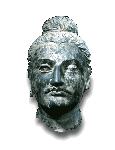
|
ARH 382 |

|
ARH 382 |
 |
>> | ID Lists | >> | ID List 13 |
Islamic Architecture
Iwan The pointed arch used as a central framing device for entrances to the madrasah, mosque, and mausoleum. The name refers mainly to a building with vaulted halls which was embellished to a high level in Islamic art. Madrasah Lit. “school” in Arabic. The Islamic institution of education. It includes living space for teachers and students, as well as rooms for instruction. Mausoleum A place for the dead which was a component in Islamic architecture particularly developed in Central Asia. Minaret Also called minar. Tower from which the call of prayer is made five times a day Mosque From the Arabic masjid which means “a place of prostration before god.” The central gathering place of worship. Registan Lit. “city square.” Ulugh Beg (1394 – 1449) Grandson of Timur and major intellectual and scholar whose contributions to astronomy were formidable. Under his leadership, the culture, arts and learning of the Timurid period reached its peak with its center in Samarkand. Education – secular and religious – never expanded in subsequent periods of Islamic Central Asia. Buddhism
- Esoteric Buddhism – a Tantric form of Buddhism as it evolves in Japan.
- Tantric.Buddhism – n. Tantra
- Jina – Lit. “conqueror.” Tathagata
- The Five Jinas or the Five Tathagatas (the Five Great Buddhas of Wisdom):
- Mahavairocana Zenith
- Aksobhya East
- Amitabha West
- Ratnasambhava South
- Amoghasiddhi North
- Dalai Lama – Dalai means literally “vast sea” in Tibetan. Lama means “teacher”
- Tara – in Tantric Buddhism is the female emanation of Avalokitesvara (Bodhisattva of Compassion).
Tantric Art
- Mandala A cosmic diagram of the Tantric Buddhist universe used in meditation to focus psychic and cosmic energy Kalachakra mandala – Lit. “wheel of time” mandala
- Tanka A Tibetan mounted painting which acts as a dwelling for a divine principle
- Yab-Yum Lit. “father-mother.” The sexual posture where the divinities of duality are united.
|